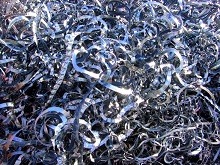Where do metals actually come from?
Wednesday, 2 September 2015

This might not be what you’re expecting from a metal recycling company, but actually, knowing where metal comes from is an important part of knowing why it’s so important to recycle. If we have perspective on the effort it takes to obtain the materials, then we can understand better why finding energy-efficient sources is more important.
Where does metal come from, country wise?
China is by far the biggest producer of metal. In the 2009 U.S. Geological Survey, China was shown to have produced 900 million tonnes of iron ore, with the next highest producer being Brazil with 380 million. The top six were as follows:
- China – 900,000,000
- Brazil – 380,000,000
- Australia – 370,000,000
- India – 260,000,000
- Russia – 85,000,000
- Ukraine – 56,000,000
In terms of shipping to the UK, it’s immediately obvious that transporting such a substantial amount of material involves tremendous cost and effort - especially when you consider that iron ore can only be transported by boat, given its size and weight.
Vast mining operations, of course, are necessary in order to extract the most metal ores from the ground. Concentrations of minerals within the rock are often quite low, meaning that a huge amount of excavation is necessary.
Though work is usually carried out to try and re-construct the environments affected, extensive mining will change a landscape. Indeed, it can take decades for recovery to fully take place.
High costs, tremendous amounts of shipping resources and a substantial impact on the environment: these are all costs of primary metal mining.
In other words: always recycle where you can!
Recent posts
- What to do with radioactive scrap metal
- How does metal recycling benefit the economy and the environment?
- 5 common metals that can be recycled
- How does metal recycling work?
- How to Sort Metal for Scrap
- How to classify the different types of waste your business produces
- What is WEEE waste?
- Can iron be recycled in the UK?
- What has the most copper in it to scrap?
- How to better understand scrap metal pricing
- Is there a link between copper and brass prices?
- How to make money from cable scrap
- How many different types of copper are there?
- What can I sell to a scrap metal yard?
- Preparing for the collection of scrap metal